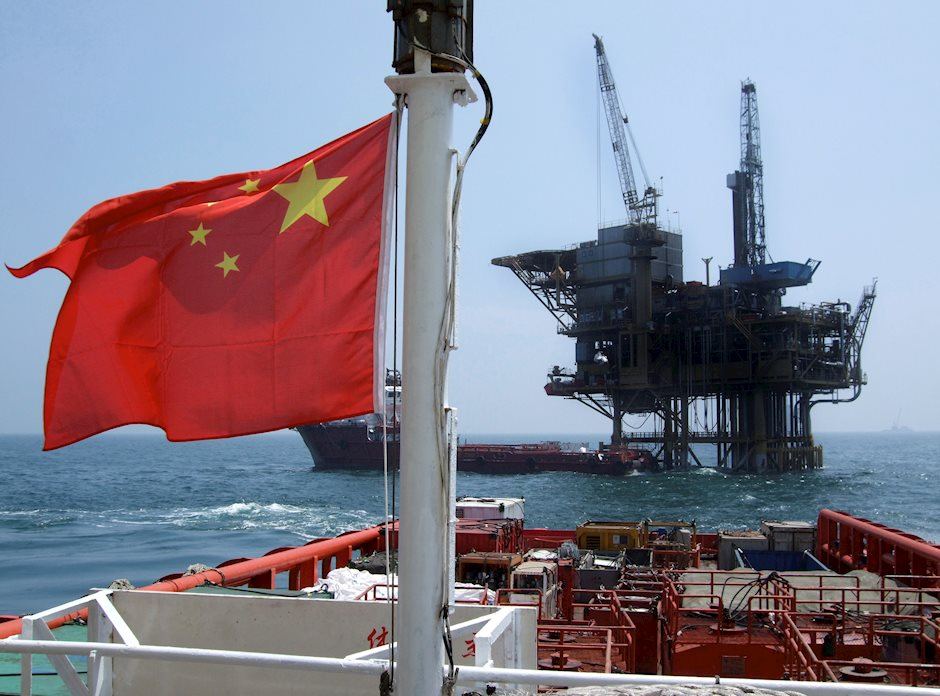The growing concerns behind the overall decline in China's trade

Affected by the novel coronavirus outbreak and the off-season of the Spring Festival, China’s import and export growth both declined between January to February compares to the same period of time last year. According to the data released by the General Administration of Customs of China on March 7, the value of China's imports and exports in the first two months totaled up to USD 591.99 billion, down 11% from a year earlier. In particular, exports fell by 17.2% and imports fell by 4%; the trade deficit was USD 7.09 billion, as opposed to the surplus of USD 41.45 billion from the previous year.
For most parts, the decline in foreign trade figures for the first two months seems to have been within the prediction, though what the researchers at ANBOUND is really getting at is that the overall decline in China's foreign trade is a huge red flag for the country’s economy, seeing that it is world's largest trading nation and " factory".
Another thing worth noting are the structural changes that has taken place in China's major trading partners. First off, you have the European Union (EU), China's top, longstanding and largest trading partner who dropped to the second rank. China's exports to the EU totaled up to RMB 316.06 billion, down by 17.1%; meanwhile, imports from the EU reached RMB 241.36 billion, down by 9.9%; China's trade surplus with the EU narrowed by 34.1% to RMB 74.7 billion. Secondly, the total value of trade between China and ASEAN was RMB 594.11 billion, up by 2% during the first two months of 2020. ASEAN surpassed EU in becoming China's largest trading partner, accounting for 14.4% of the country’s total foreign trade. Not forgetting the U.S.- China trade relations which has been suffering as of late too, which happens to be China's third largest trading partner. Likewise during first two months of 2020, China's exports to the U.S. fetched a worth of RMB 300.1 billion, down by 26.5%; imports from the U.S. reached RMB 122.4 billion, up by 4.3%; the trade surplus with the U.S. narrowed by 38.9% to RMB 177.7 billion. Finally, the trade between China and Japan has declined significantly too. Japan is China's fourth largest trading partner. The total value of the China-Japan trade was RMB 274.95 billion, down by 15.3% and accounting for 6.7% of China's total foreign trade. In the RMB 274.95 billion alone, exports to Japan totaled up to RMB 118.74 billion yuan, down 23.3%; imports from Japan reached RMB 156.21 billion, down 8%; the trade deficit with Japan was RMB 37.47 billion, an increase by 1.5 times.
Our point is, the data above shows some growing concerns in the Chinese economy:
To start off, China's foreign trade is shrinking sharply. It’s not just China's huge surplus turning into deficit and that its positive economic growth contribution is turning negative, but more importantly, the sharp decline in foreign trade shows China's economy is having less relations with the world’s economy. China has long been involved in globalization and international division of labor, becoming an important link in the global supply chain, but this may change following the recent decline in the foreign trade.
Next, China's trade relations with Europe, the United States, Japan, and other developed countries has declined significantly, and it isn’t just some short-term seasonal fluctuation. After nearly two years of the trade war between the United States and China, coupled with the impact of novel coronavirus outbreak, China's trade with developed economies is experiencing negative growths overall, a result of China's economic "decoupling" with the developed economies that is gradually intensifying.
Then, there’s multinational companies from developed economies that are likely to increase their capital pullout from the Chinese market. A considerable proportion of China's foreign trade comes from foreign investment (wholly-owned or joint venture) in China. In the past decade or so, China has become an important link in the global supply chain system by relying on foreign investment and its exports. Now however, there are signs showing that China's share of global trade is shrinking and that foreign investment may be withdrawing from the country to build a diversified global supply chain outside China.
In fact, China is aware of the potential risks of a global supply-chain realignment and is actively pushing for the resumption of production to secure supplies. An official from the Ministry of Commerce of China (MOFCOM) recently said that the situation concerning foreign trade enterprises has become more severe due to issues faced on a local and industrial level, such as difficulties encountered in the areas of work resumption and in-country logistics, having a hard time receiving any orders or fulfilling them, poor international logistics, and increasing trade barriers. In conjunction with local governments and other departments, the Ministry of Commerce will issue policies to stabilize foreign trade, and make comprehensive use of financial tools, export credit and insurance measures to support foreign trade enterprises in resuming production, whilst attempting to maintain the market order. At present, the progress of the resumption of production has accelerated significantly. Key foreign trade enterprises in Zhejiang and Tianjin have hit a resumption of work rate of 100%, while Guangdong, Jiangsu, Shanghai, Shandong, and Chongqing have all topped at 70%. MOFCOM also believes that the impact of the current foreign trade situation is temporary and phasal or in simpler words, a mere phase, and the positive long-term trend of China's foreign trade development remains unchanged.
However, the Chinese government’s measures of aggressively retaining the supply chain in China is unfortunately a unilateral effort. According to our tracking studies, the current comprehensive risk assessment of the Chinese supply chain by foreign investors focuses on the prospects of broader and longer-term development. Given the impact of the U.S.-China trade war and coronavirus outbreak in the country, foreign investors believe there will be growing concerns that could lead to a realignment of supply chains, trade relationships and financial transactions, all of which will deprive China of future growth prospects. Such concerns extend beyond a short-term economic slowdown to reforms such as restructuring the government and resetting the growth model. Foreign investors also said that while assessing risk factors associated with the overall supply chain in the future, they will not only take into consideration of factors such as the government policies, supported key industries, the efficiency in the government’s efforts to combat the epidemic, or the GDP growth rate, but whether the government could prevent the disease outbreaks in time too. In the long run, China's transparency and a system of independent rule of law may matter more in ensuring the supply chain’s competitiveness than its emergency preferential policies.
Ultimately, these views need to be acknowledged as they reflect the growing concerns in the foreign investment in China, which has moved beyond the immediate, short-term impact of the coronavirus outbreak. Foreign investors are worried about China's integration into the global economy and society, its structural reform, information transparency and the construction of a legal environment in the context of anti-globalization and intensified geopolitical games. Should foreign investors assess China's investment environment from a broader and longer-term perspective carefully, they may reach a more conservative and even pessimistic judgement.
Final analysis conclusion:
The overall decline in China's foreign trade is not merely a short-term data fluctuation reflected in a single field, instead, it is a sign of growing concerns for the problems that China's economy is facing under the changes of globalization. Unfortunately, the short-term fluctuations caused by the novel coronavirus outbreak alone will not explain the phenomena. The matter involves the judgment of the overall environment and long-term prospects of China's development as well.
Author

ANBOUND Team
ANBOUND Research Center Sdn Bhd

















